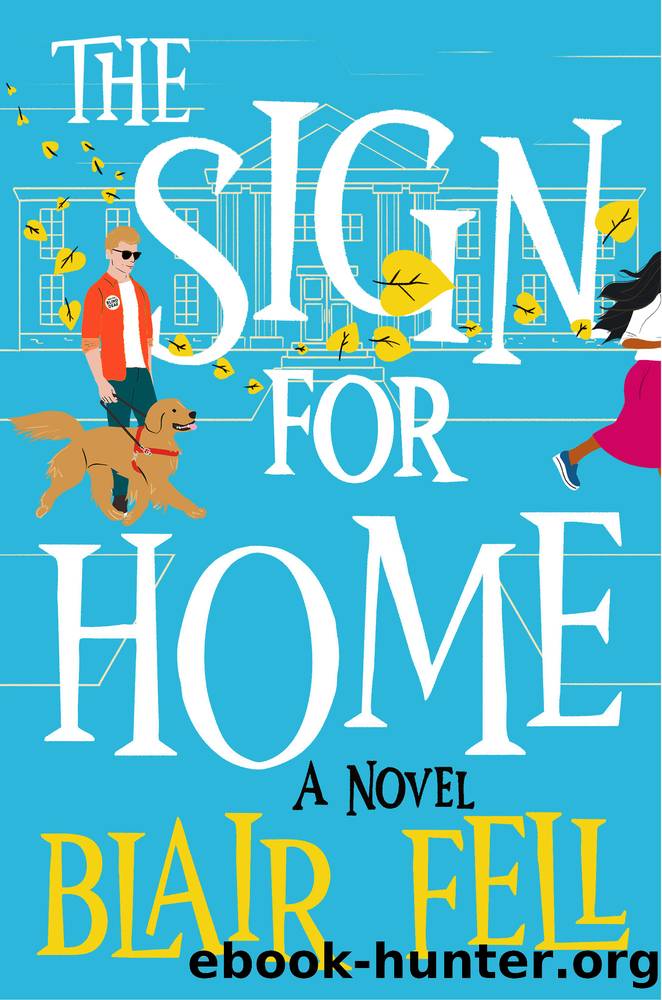The Sign for Home by Blair Fell

Author:Blair Fell
Language: eng
Format: epub
Publisher: Atria/Emily Bestler Books
Published: 2022-04-05T00:00:00+00:00
25 TABITHA
The conference center was massive, but within a few minutes I was able to find the hall and locate Mindy, my old colleague from Poughkeepsie, along with a whole gaggle of other interpreters. Interpreters are never hard to spot in a room thanks to their unflashy, solid-colored, skin-contrasting clothes, their usually obtrusive stance at the front of a room, and their quintessential interpreter faces, which say: Yes, you see us in this space, but we reside in a liminal world between you and the reason you are here, so donât ask us questions.
Mindy looked different from when we worked together years ago. She had gone full-on glamour butch with short hair and a tailored black suit. She greeted me with a hug and then introduced me to the two other interpreters who were part of the consumerâs regular team. By the way they dressed and their just-bored-enough demeanor, it was easy to tell they both came from New York City. There was Liz, an olive-skinned woman in her late twenties with long dyed-blond hair. She was a Certified Deaf Interpreter (CDI), which means sheâs Deaf herself and excels at working with atypical language users (Deaf folks who donât use standard ASL or might be foreign born and have limited language) as well as the DeafBlind. I always felt like I hit paydirt when I got teamed with a good CDI, since Iâd get to see how a native signer would make a difficult concept breathtakingly clear.
The other interpreter was Zach, a hearing guy in his midthirties who wore edgy earlobe plugs and had a military buzz cut, giving him a bit of a covert leather-man look. Zach was kind of hot and instantly flirty with me, which I might have reciprocated if I werenât so nervous. I soon found out that the four of us would be responsible for interpreting only for our consumer, who was the main speaker. A second team of interpreters, two hearing and two CDIs, would be responsible for voicing/ASL interpreting for the Deaf and hearing audience Q and A. Add to all of us a whole boatload of Tactile ASL interpreters and SSPs who would be working with any DeafBlind folks sitting in the audience. Then there were the captioners who would make sure those audience members who didnât hear and didnât know sign language could read along. This is real access, I thought. Why canât it always be like this?
âSo, our boss, Tabitha, will present for about thirty minutes,â Mindy explained in ASL. (If youâre a sign language user in a Deaf space itâs expected that you will always be signing.) âYouâll love her. Brilliant and super easy to understand. You and I will take turns interpreting TSL and voicing onstage. Meanwhile Zach and Liz here will be doing Haptics stuff on Tabithaâs back. Even though she lost the bulk of her vision just last year, sheâs very Protactile, so be aware.â
Haptics? Protactile? I had no idea what Mindy was talking about, but
Download
This site does not store any files on its server. We only index and link to content provided by other sites. Please contact the content providers to delete copyright contents if any and email us, we'll remove relevant links or contents immediately.
In Control (The City Series) by Crystal Serowka(36143)
The Wolf Sea (The Oathsworn Series, Book 2) by Low Robert(35136)
We Ride Upon Sticks by Quan Barry(34431)
Crowbone (The Oathsworn Series, Book 5) by Low Robert(33524)
The Book of Dreams (Saxon Series) by Severin Tim(33305)
The Daughters of Foxcote Manor by Eve Chase(23518)
Trainspotting by Irvine Welsh(21518)
Call Me by Your Name by André Aciman(20371)
Shot Through The Heart (Supernature Book 1) by Edwin James(18853)
The Secret History by Donna Tartt(18843)
The Girl from the Opera House by Nancy Carson(15721)
All the Missing Girls by Megan Miranda(15564)
American King (New Camelot #3) by Sierra Simone(15459)
Pimp by Iceberg Slim(14388)
Sad Girls by Lang Leav(14311)
The Betrayed by Graham Heather(12746)
The Betrayed by David Hosp(12657)
4 3 2 1: A Novel by Paul Auster(12281)
Still Me by Jojo Moyes(11177)
